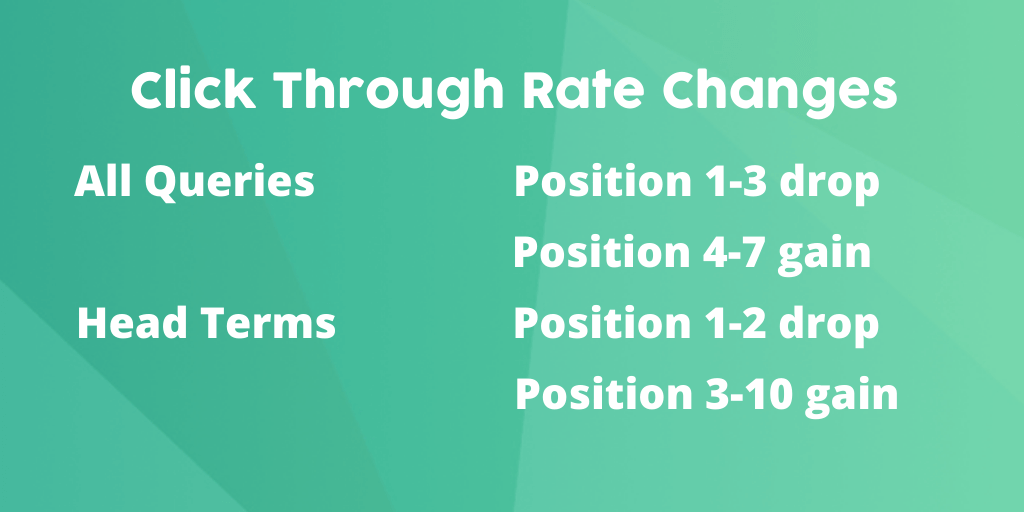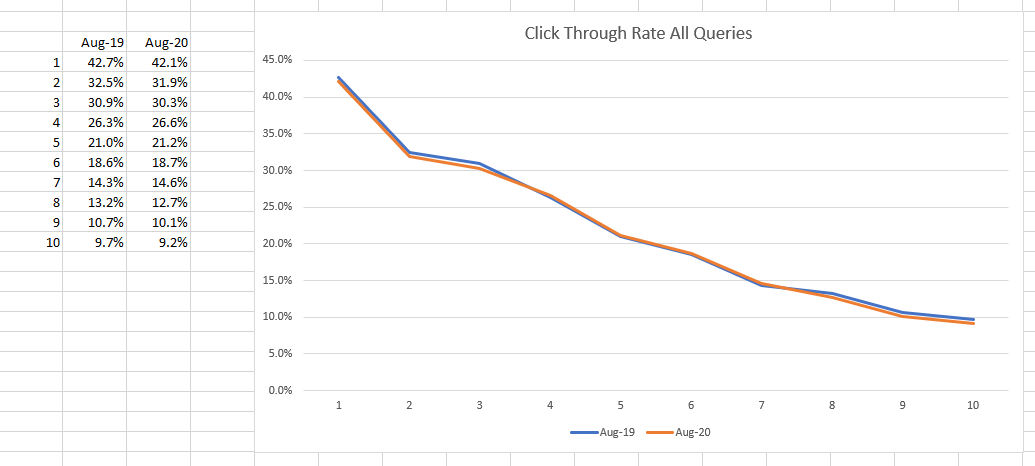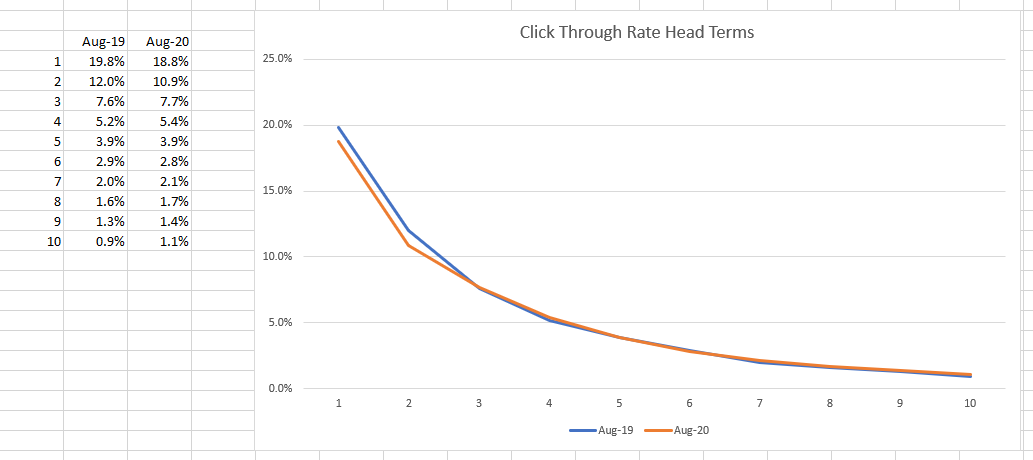
Google has introduced lots of changes into the search result pages over the last 12 months. From putting 4 ads above the organic listings to featured snippets and other search features, but are users less likely to click on the organic search results?
At SEOTesting.com we have a lot of Google Search Console data to work with, so we thought we’d compare the click through rate graph for the top 10 organic positions in Google for August 2019 against August 2020.
All Queries
Firstly we looked at all the queries. This amounted to 1.87m queries across 838 sites.

Click through rate of all queries appearing in the top 10 positions
There is a drop in CTR in the first 3 positions, with the middle of the SERPs seeing a gain.
But in general the changes in click through rate are not massive. This dataset does contains a huge amount of long tail keywords that may not have ads or search features appearing because they are low volume. To see whether ads and search features play a bigger part in higher volume search terms we investigated head terms.
Head Terms
So how did things change when we looked at keywords that had a monthly search volume over 1,000 (effectively at least 1,000 impressions in the serps).
This amounted to a dataset of 25,400 queries – which shows how many searches are long tail and low volume keywords!

Click through rate of queries that get at least 1,000 searches per month
The click through rate of higher volume keywords has dropped by 1% for the first two positions.
For positions 3 to 10 – the click through rate has generally gone up slightly.

Frequently Asked Questions
What is a CTR curve in SEO?
A CTR curve shows how the click through rate changes across the top search positions in Google.
Why does the CTR curve change over time?
Google often adds new ads and search features. These can affect how often users click on organic results.
How did the CTR curve change in the past 12 months?
Top positions lost a small amount of clicks while positions in the middle gained slightly. This may be due to featured snippets and other search features.
Do ads impact the CTR curve?
Yes. Ads above organic results can lower click rates for the top positions but organic traffic is still strong.
Why are long tail keywords important in the CTR curve?
Long tail keywords often have less competition and fewer ads. They help keep the CTR curve stable for many queries.
Summary
The improvement in click through rates across the mid section of the SERPs for both data sets could be because featured snippets do not always come from the top 3 positions, but sometimes lower down. If this featured snippet is clicked on, the position recorded in Google Search Console will be the organic position it should have been listed in.
Overall however, given there seems to have been a big increase in ads displayed above organic search results, and the amount of search features displayed in the results, the click through rates haven’t dropped as much as I expected. Maybe this is how Google justify the increase in ads? The increase in display PPC ads may be hurting existing PPC advertisers more than it hurts sites in the organic positions.
What I feel these results do show is although there have been an increase in ads, how the ads are displayed look more like organic results, and more search features are added to the SERPS, organic search is still a massively important part of search engine marketing and as part of a long term strategy is still giving great click through rates and traffic.
I’ll keep this content up to date as months progress so we can see how the click through rate curve is changing over time, as Google makes more and more changes to the search result pages.
Feel free to tweet your thoughts on this and I will embed them in the article.

